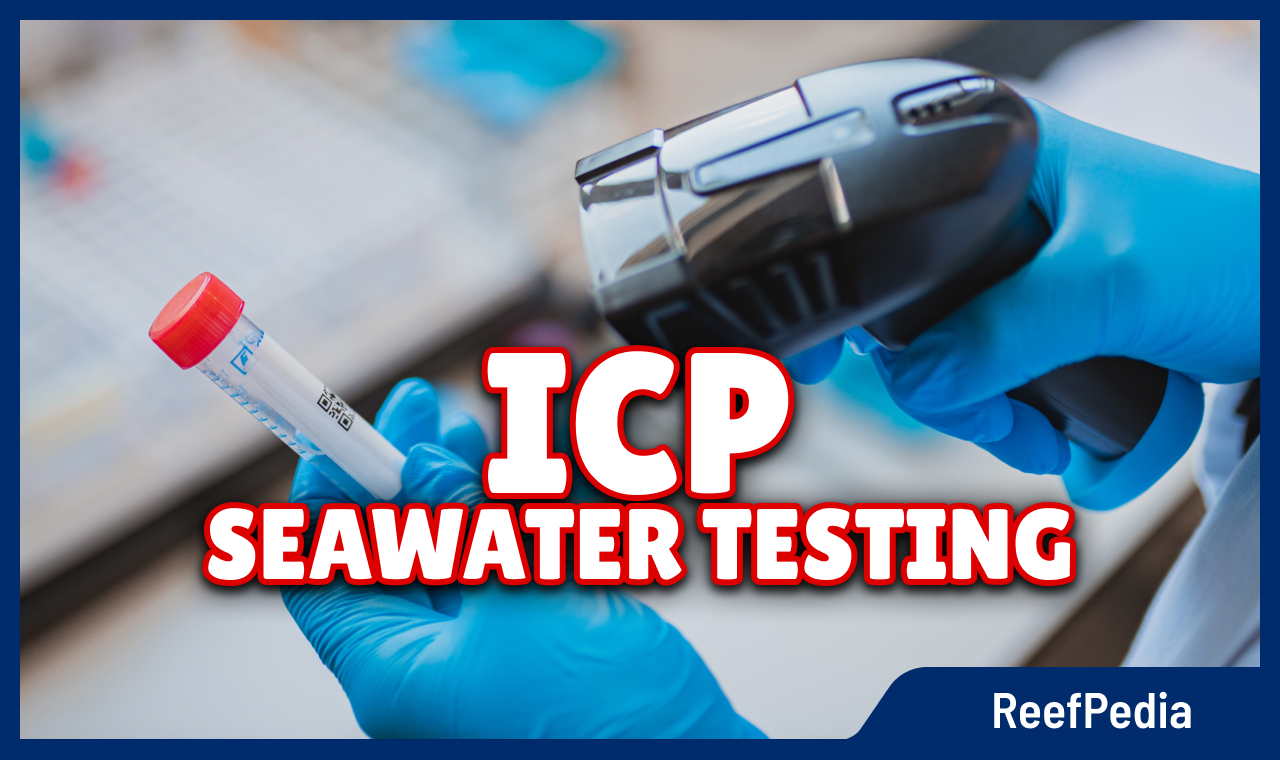Every aquarist strives to replicate the parameters of natural seawater in his aquarium. From the aquarist’s point of view, seawater is characterised by basic parameters consisting of: KH, Ca, Mg, No3, PO4, pH, temperature and salinity, which can be easily measured with simple measuring devices such as a refractometer and commercially available drop tests. However, there are many more parameters in seawater than those listed above. There are two groups of elements: macro- and microelements.
Macro-elements:
Micronutrients and elements exceedances of which must be detected and eliminated quickly for animal safety:
- Lithium (Li)
- Iodine (I)
- Molybdenum (Mo)
- Nickel (Ni)
- Vanadium (V)
- Manganese (Mn)
- Zinc (Zn)
- Iron (Fe)
- Cobalt (Co)
- Chromium (Cr)
- Barium (Ba)
- Beryllium (Be)
- Copper (Cu)
- Aluminium (Al)
- Tin (Sn)
- Mercury (Hg)
- Selenium (Se)
- Cadmium (Cd)
- Antimony (Sb)
- Arsenic (As)
- Lead (Pb)
- Titanium (Ti)
- Lanthanum (La)
- Scandium (Sc)
- Tungsten (W)
- Gallium (Ga)
- Bismuth (Bi)
- Tellurium (Te)
- Indium (In)
- Silver (Ag)
- Phosphorus (P)
- Silicon (Si)
Currently, the most accurate method for determining elemental composition of seawater, as well as RO/DI, is the Inductively Coupled Plasma Optical Emission Spectrometry (ICP-OES) technique of atomic emission spectrometry. Using this analytical technique, it is possible to determine the elemental composition of seawater, both qualitatively and quantitatively. High plasma temperature makes it possible to determine elements that have a high activation potential such as sulphur. The technique of atomic emission spectrometry with induced plasma activation makes it possible to determine both major and trace elements in the same sample.
Why qualitative? Because you need information on what elements are in seawater. ICP-OES allows single element measurement and multi-element analysis of up to 75 elements.
Why quantitative? Because information on what elements are included in the seawater of your aquarium is insufficient. You also need to know their quantity, so that you can respond appropriately to any deviation from their optimal values. In this way you will ensure optimal living conditions for the animals in your aquarium.
Why perform an ICP test at all?
First of all, every aquarist wants to keep the parameters at the right level in their tank. In short, if a parameter is not in the norm then, on the one hand, its value may be too low, and on the other hand, too high. If any of the elements is too low then it is enough to increase the dosage. What, and how much to dose we will find out from the recommendation attached to the water test. In the case of excesses, there are two cases: excessive dosing , or an external factor causing contamination of the water in the tank. Water contamination can be disastrous for our aquarium. A common case is contamination by pump impellers or metal parts near the water.
In the first case, after receiving the information from the ICP OES test, we lower the dosage, in the second case we should find the cause and follow the steps received in the recommendation attached to the ICP OES test.
What are the benefits of ICP-OES testing?
- Animal protection at the highest level. Analytical results are accompanied by recommendations for action to improve water quality
- Accuracy of measurement, since the ICP-OES technique is a trace analysis, it detects elements with concentrations ranging from 10-6 g/L (ug/L).
- A quick way to detect water contaminants, ionic imbalances and detect deficiencies or overdoses of individual elements.
How to perform ICP-OES analysis and what does it consist of ?
To perform an ICP test you should:
- Buy a test kit (many brands of tests are available on the marine aquarium market)
- Take a representative sample of water, according to the instructions included in the purchased test kit
- Send the samples to the laboratory
- Wait for the results
What the measurement itself looks like on the ICP?
Keep in mind that the analysis of water, either seawater or RO/DI using an ICP-OES spectrometer is an analytical method that belongs to the group of destructive methods. This means that the sample to be analysed is destroyed at one of the analysis stages and there is no possibility of recovering the analysed water.
There are several stages of analysis with the ICP-OES instrument:
- Sample preparation for analysis
- Collection of the sample by the instrument
- Excitation process using plasma
- Detection, the heart of the analysis
Summary
There are two approaches to taking ICP OES measurements, regularly measuring ICP at a certain frequency, or taking a measurement when we see something concerning happening to our aquarium and want to figure out the cause. The first way allows us to confirm the dosage method and prevent problems before changes occur that endanger the animals. The second way allows us to determine the problem and eliminate it. It is up to the aquarist to decide which method to choose.
About author

Magdalena Metzler
Privately, I am a mother and a lover of nature and sport. My main interest is quantum chemistry, which hides a whole lot of unsolved mysteries and connections, which is extremely exciting from a scientific point of view.
In my scientific career, I have conducted international projects focused on innovative solutions for many branches of business, e.g. automotive, construction, and now, of course, marine aquaristics.
Working at Reef Factory gave me a passion for marine aquaristics, which I can develop every day, building a chemistry department and creating products that will help aquarists take care of tanks and ensure the highest safety of animals.
One of the most exciting memories of working at Reef Factory is the commissioning of the ICP-OES spectrometer, which analyzes the elemental composition of seawater. The method of analysis in ICP is based on an analytical technique, which is a combination of my passion for quantum chemistry and marine aquaristics.
I hope you find my articles on ReefPedia interesting and helpful! Happy reading :))
Magda

